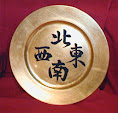I have pondered this and jotted down a few ideas.
(post updated on 1/1/2025 with input from ian.fenrisgames)
DAGONBANE
Your Investigator
Attributes
Same as Dragonbane; add a new attribute, EDU (2D6+6).
SAN is replaced with RESolve. Starting RES is equal to the average of WIL, INT and EDU. Whenever a scenario calls for a SAN roll, make an EDU roll instead. Success: nothing happens; failure: lose 1 RES.
Professions
Athletic
Key attribute AGL
Skills: Acrobatics, Awareness, Bluffing, Brawling, Evade, Swimming
Heroic ability: Veteran
Sample occupations: acrobat, boxer, gangster, soldier…
Charismatic
Key attribute CHA
Skills: Acrobatics, Bartering, Bluffing, Languages [Living], Performance, Persuasion
Heroic ability: Insight
Sample occupations: actor, clergyman, prostitute, solicitor…
Cultured
Key attribute EDU
Skills: Awareness, Etiquette, Evade, First Aid, Languages [Dead], Spot Hidden
Heroic ability: Intuition
Sample occupations: archaeologist, author, book dealer, librarian, occultist, humanities professor…
Investigative
Key attribute AGL
Skills: Acrobatics, Awareness, Bluffing, Brawling, Sneaking, Streetwise
Heroic ability: Word on the street
Sample occupations: journalist, police detective, private investigator…
Scientific
Key attribute INT
Skills: Awareness, Evade, First Aid, Languages [Living], Sneaking, Spot Hidden
Heroic ability: Practical Science
Sample occupations: laboratory assistant, physician, psychiatrist, science teacher…
Skilled
Key attribute STR
Skills: Awareness, Brawling, Sleight of Hand, Spot Hidden, any skill based on the investigator’s occupation (Drive Auto, Elec. Repair, Mech. Repair, Pilot Aircraft…)
Heroic ability: DIY
Sample occupations: driver, mechanic, pilot…
List of Core Skills
Acrobatics
Awareness
Bartering
Bluffing
Drive Auto (like ‘Riding’ but for automobiles)
Elec. Repair (like ‘Crafting’ but for electrical gear)
Etiquette (like ‘Bushcraft’ but in the jungle of high society)
Evade
First Aid (‘Healing’ renamed)
General Knowledge (new skill, EDU)
Languages [Dead]
Languages [Living]
Mech. Repair (like ‘Crafting’ but for mechanical gear)
Occult (like ‘Myths & Legends’ but based on EDU)
Performance
Persuasion
Pilot Aircraft (new skill, INT)
Pilot Boat (‘Seamanship’ renamed)
Riding
Sleight of Hand
Sneaking
Spot Hidden
Streetwise (like ‘Bushcraft’ but in the urban jungle)
Swimming
Weapon Skills
Brawling (STR)
Firearms (AGL)
Mêlée weapons, ancient (STR)
Missile weapons, ancient (AGL)
List of Heroic Abilities
Catlike
Contortionist
Defensive
Disguise
DIY (works like ‘Master Blacksmith/Carpenter/Tanner’, but is based on the investigator’s occupation, Requirement: Elec. Repair/Mech. Repair 12)
Eagle Eye
Fast Footwork
Fast Healer
Fearless
Focused
Guardian
Insight
Intuition
Iron Fist
Iron Grip
Lightning Fast
Magic Talent – you can cast a single mythos spell without incurring the associated RES loss (TBD). This heroic ability must be selected for each such spell.
Marksman (new heroic ability: boon on firearms, Requirement: Firearms 12, WP 3)
Monster Hunter (only available in pulp games)
Musician
Mythos Creature Slayer (‘Dragonslayer’ renamed, only available in pulp games)
Practical Science (works like ‘Master Blacksmith/Carpenter/Tanner’, but is based on the investigator’s speciality, Chemistry, Medicine, Physics…)
Relic Hunter (‘Treasure Hunter’ renamed, only available in pulp games)
Robust
Sea Legs
Veteran
Word on the street (like ‘Intuition’, but for street wisdom-based decisions, Requirement: Streetwise 12)
























